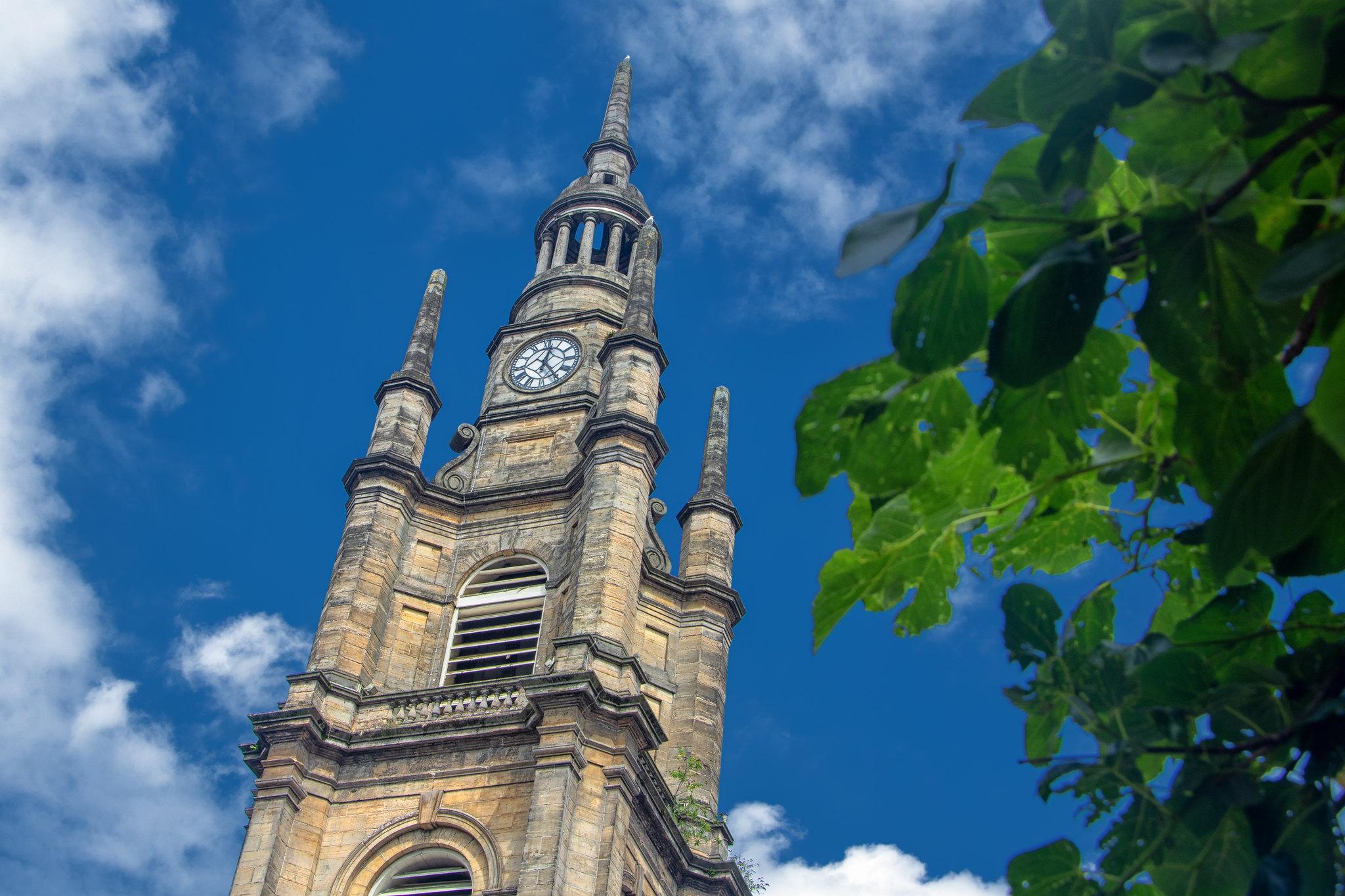Glasgow City Free Church
Glasgow, City of Glasgow
Alexander 'Greek' Thomson was a Scottish architect with a penchant for overtly combining classical and oriental architectural styles.

It’s a strange name, St George’s Tron, more reminiscent of legends about dragon slaying or cult science fiction films, than the name of a Presbyterian place of worship!
Glasgow, City of Glasgow
We don’t know why this church bears the name of St George, a 3rd century Greek soldier who was martyred for his bold faith in Jesus. We do know that his courage in facing up to his commander in chief, the Roman Emperor, so impressed the later English Crusaders that he became England’s patron saint.
‘The Tron’, as the church has commonly been known in the city of Glasgow for many decades, tells a more Scottish story which goes back to the 6th century St Mungo, credited with founding this city of Glasgow when it was little more than a rural settlement on the Clyde. Originally St. Kentigern, this popular bishop came to be known as St Mungo (meaning ‘dear one’). He founded a church on a spot he called ‘Glasgui’ (meaning ‘dear green place’) which later became the site of Glasgow’s medieval Cathedral, which was later given his name and which was situated in what was then the city’s eastern perimeter.
He is said to have preached a sermon containing the prayer 'Let Glasgow flourish by the Preaching of thy Word and the praising of thy Name'. In those days, the church not only preached the Good News about Jesus Christ, it also played an important role in the commercial life of society, and for this reason, Mungo’s prayer came to be adopted as the motto of the city he helped to found.
At the Reformation in 1560 the school was disbanded and the church initially abandoned on account of the Reformers’ objection to Masses being sung to secure, as they believed, the liberation of departed souls from purgatory. However, the Church was soon restored as Glasgow’s second parish church in 1592, being called the ‘Laigh Church’, to differentiate it from the ‘Hei Kirk’, St Mungo’s Cathedral, and later as the ‘Tron Kirk’, because the public weights used at the Trongate, were housed at the church for many years.
Around the Tron arose the ‘market cross’ – the focal point for Glasgow’s substantially increased trading activities – with a tollbooth for collecting market tolls. An annual eight day fair, with markets and entertainment was held here each July, and the name continues to this day as the ‘Glasgow Fair’, the term used to describe the annual ‘trades’ holiday which takes places in the last fortnight of July.
When a notorious Hell Fire Club set fire to the church in 1793, a new church was built around the surviving spire that is still a prominent feature of the former church building to this day, although the building itself is now the Tron Theatre.
In time, this congregation became known as St George’s Parish Church and in 1940 it merged with the former Tron St Anne’s congregation to become St George’s Tron.
Glasgow, City of Glasgow
Alexander 'Greek' Thomson was a Scottish architect with a penchant for overtly combining classical and oriental architectural styles.
Glasgow, City of Glasgow
The Metropolitan Cathedral Church of St Andrew built in the city centre of Glasgow is the mother church of the Archdiocese of Glasgow, designed in 1814 by James Gillespie Graham in the Neo Gothic style.
Baldernock, Strathclyde
The best way to approach this charming 18th century parish church is to stroll the mile from Milngavie.